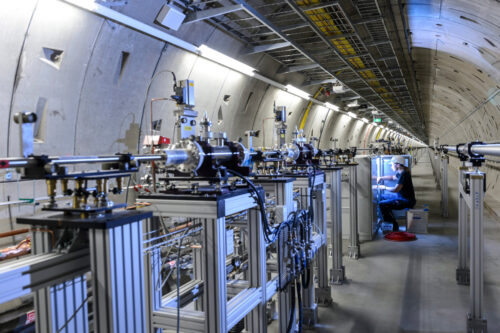European X-ray Free-Electron Laser Facility

European XFEL is a powerful X-ray laser facility in northern Germany, that is opening up new research opportunities for scientists and industrial users. It provides scientists from all over the world with ultrashort X-ray flashes – 27 000 times per second and with a brilliance that is a billion times higher than that of the best conventional X-ray radiation sources.
The 3.4-kilometre-long X-ray laser is located mainly in underground tunnels. It runs from the Science City Bahrenfeld in Hamburg to Schenefeld in the neighbouring German federal state of Schleswig-Holstein. It is run by an independent research organization, the European XFEL GmbH, founded in 2009 and employing about 500 people. At present, 12 countries are participating in the European XFEL: Denmark, France, Germany, Hungary, Italy, Poland, Russia, Slovakia, Spain, Sweden, Switzerland, and the United Kingdom.
European XFEL cooperates closely with the DESY research centre and other organizations worldwide. To a great extent, the European XFEL facility was realised by means of in-kind contributions by shareholders and partners.
The European XFEL consists of a superconducting linear particle accelerator that boosts electrons to high energies. The electrons are then directed through long, special arrangements of magnets (undulators) in which they emit extremely short and intense X-ray flashes with laser properties. These X-ray flashes are then distributed to initially three beamlines with seven experiment stations.
Using the European XFELs brilliant X-ray radiation, physicists, chemists, biologists, and other scientists from all over the world are be able to map the atomic details of viruses, decipher the molecular composition of cells, take three-dimensional images of the nanoworld, film chemical reactions, and study processes such as those occurring deep inside planets. The novel insights they gain can provide the basis for solutions to societal challenges such as the need for sustainable energy sources, efficient data storage devices and therapies for antibiotic resistance.
